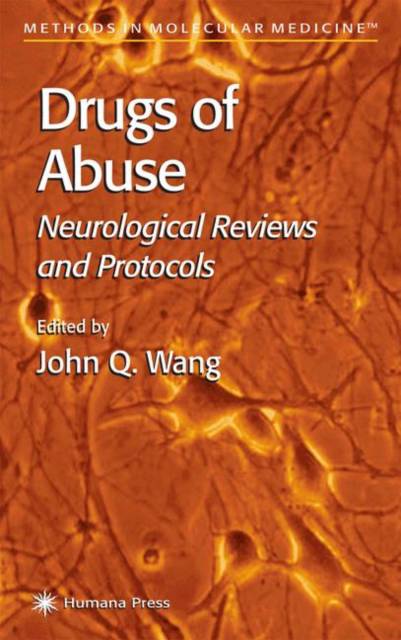
- Afhalen na 1 uur in een winkel met voorraad
- Gratis thuislevering in België vanaf € 30
- Ruim aanbod met 7 miljoen producten
- Afhalen na 1 uur in een winkel met voorraad
- Gratis thuislevering in België vanaf € 30
- Ruim aanbod met 7 miljoen producten
Zoeken
Drugs of Abuse
Neurological Reviews and Protocols
€ 259,45
+ 518 punten
Omschrijving
Drugs of Abuse: Neurological Reviews and Protocols is intended to provide insightful reviews of key current topics and, particularly, state-- the-art methods for examining drug actions in their various neuroanato- cal, neurochemical, neurophysiological, neuropharmacological, and molecular perspectives. The book should prove particularly useful to n- comers (graduate students and technicians) in this field, as well as to those established scientists (neuroscientists, biochemists, and molecular biologists) intending to pursue new careers or directions in the study of drugs. The book's protocols cover a wide variety of coherent methods for gathering inf- mation on quantitative changes in proteins and mRNAs at both tissue and cel- lar levels. Inducible gene expression in striatal neurons has been a hot topic over the last decade. Alterations in gene expression for a wide range of proteins in the striatum have been investigated in response to drug administration. Altered expression of given mRNAs and their product proteins constitutes essential molecular steps in the development of neuroplasticity related to long-term addictive properties of drugs of abuse. With the multiple labeling methods that are also described in the book, gene expression can be detected in a chemically identified cell phenotype; the expression of multiple genes of interest can be detected in a single cell simultaneously. Hundreds or thousands of gene expr- sion products can today be detected in one experimental setup using the pow- ful systematic cDNA macroarray or microarray screening technology. Moreover, protocols useful in analyzing the functional roles of genes and proteins (e. g.
Specificaties
Betrokkenen
- Uitgeverij:
Inhoud
- Aantal bladzijden:
- 514
- Taal:
- Engels
- Reeks:
- Reeksnummer:
- nr. 79
Eigenschappen
- Productcode (EAN):
- 9781588290571
- Verschijningsdatum:
- 11/12/2002
- Uitvoering:
- Hardcover
- Formaat:
- Genaaid
- Afmetingen:
- 160 mm x 241 mm
- Gewicht:
- 825 g

Alleen bij Standaard Boekhandel
+ 518 punten op je klantenkaart van Standaard Boekhandel
Beoordelingen
We publiceren alleen reviews die voldoen aan de voorwaarden voor reviews. Bekijk onze voorwaarden voor reviews.







